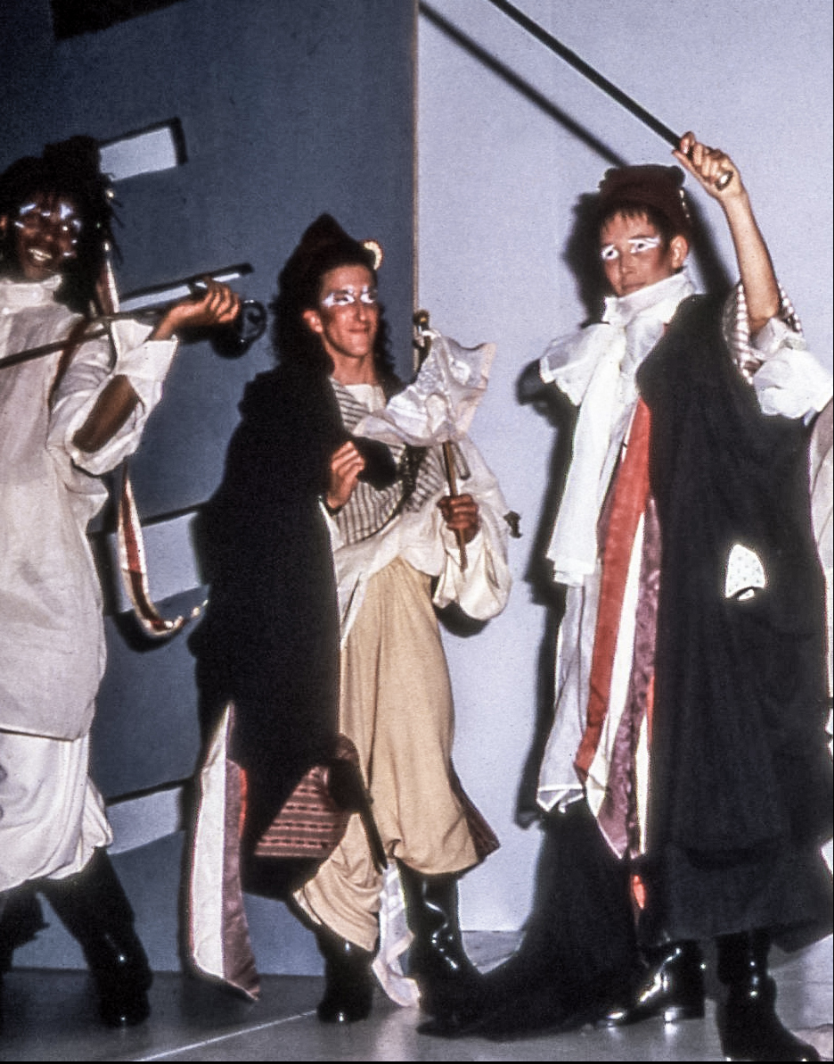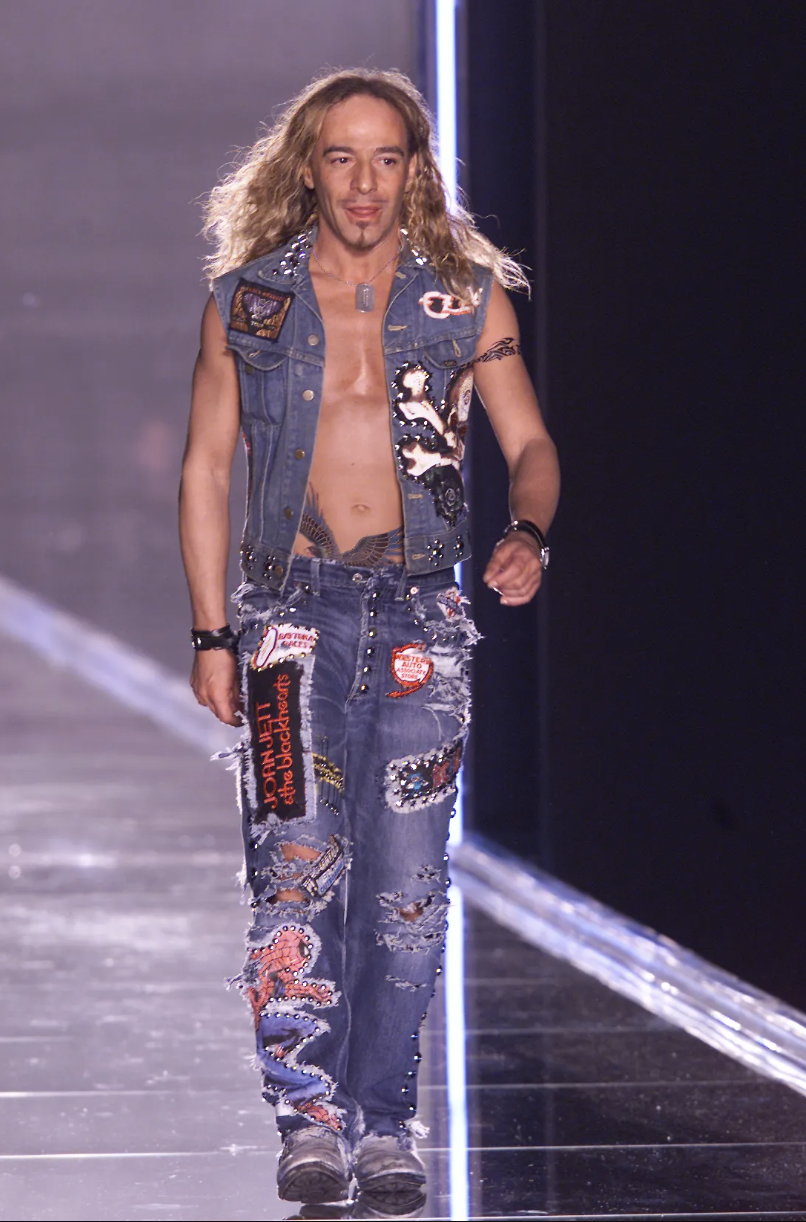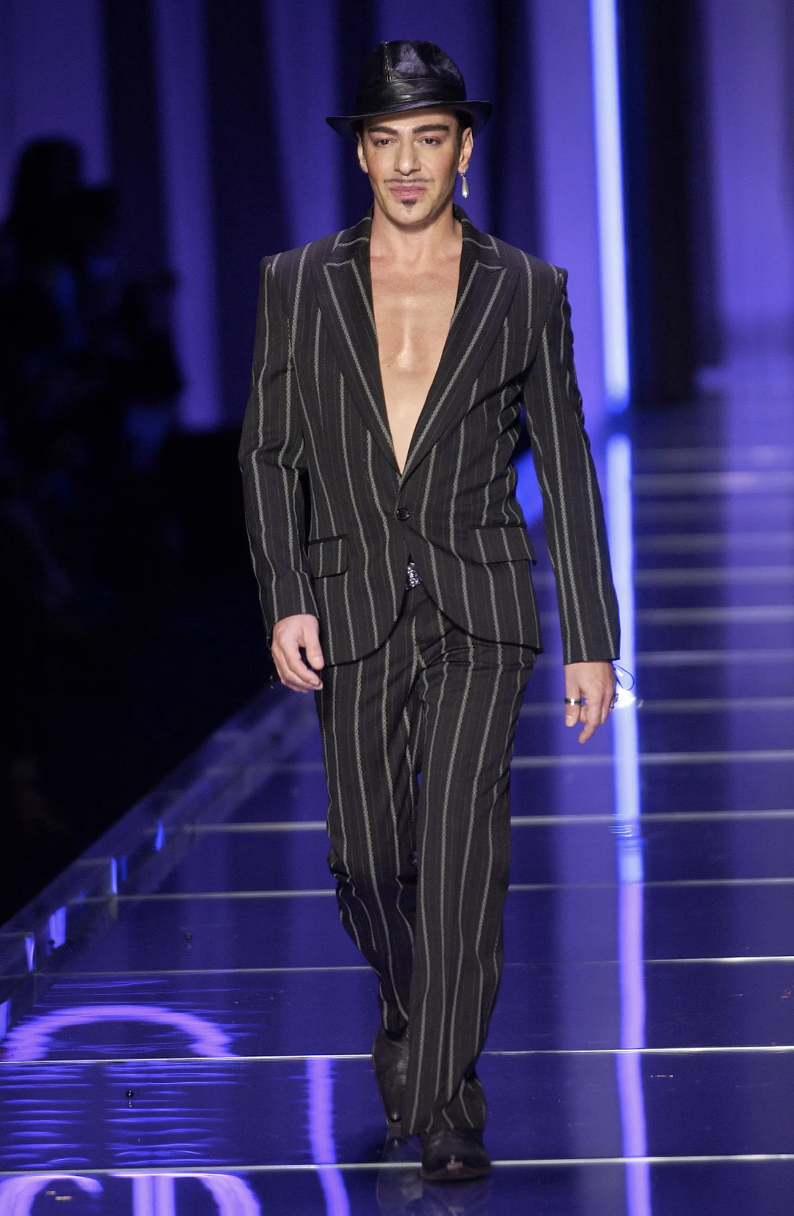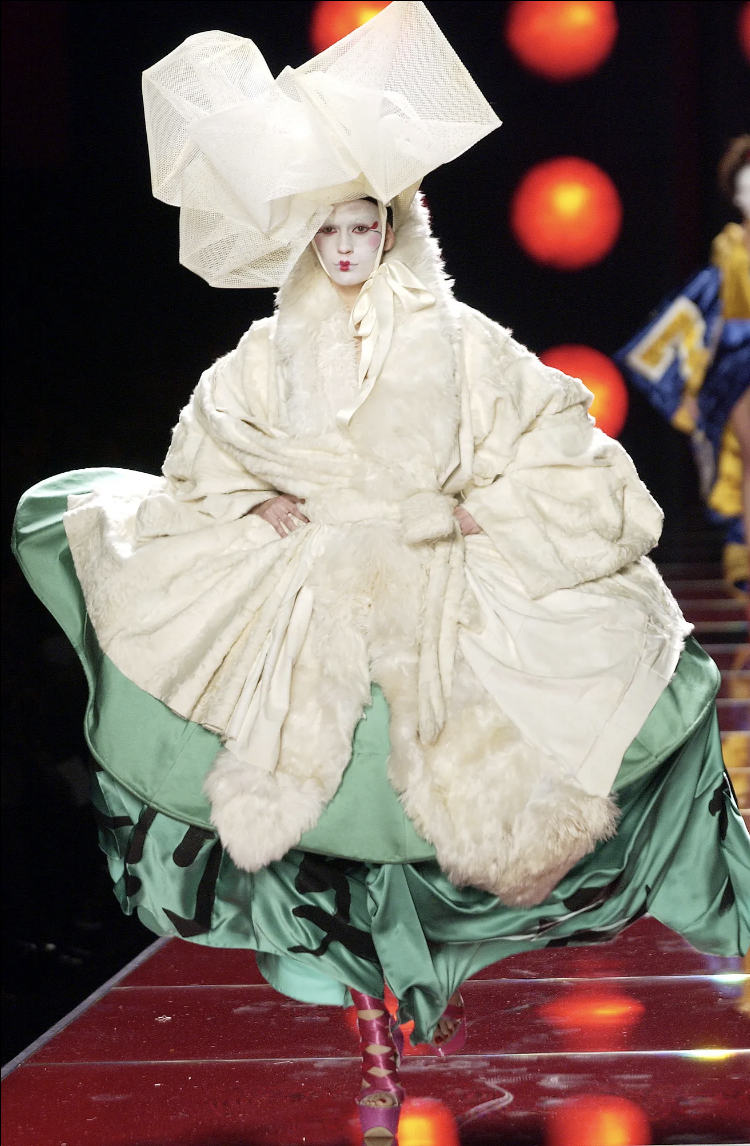John Galliano: Uncontrollable, Uncontainable, Irredeemable
Daring. Innovative. Controversial. Those few words sum up John Galliano’s profound legacy in the fashion world. Few have gone from the exhilarating peaks to the devastating lows the British-born designer has experienced through his long and iconic career. But who is the man behind some of the most memorable fashion shows in history, and how did he fall from grace?
John Galliano was born in 1960 to a British father and Spanish mother in Gibraltar, a small island in the Mediterranean under British rule. When he was six, the family moved to South London. Galliano was captivated by fashion design and historical costuming, which inspired him to attend Central Saint Martins, a prestigious college for art and design in London that has produced many well-known designers such as Alexander McQueen, Stella McCartney and Christopher Kane.
His graduation collection Les Incroyables put his limitless creativity on display. The show was inspired by a group of young aristocrats who lived during the French Revolution and was put together with the cheapest materials Galliano could find as a money-conscious college student. His show was so well received that the owner of Browns, an exclusive London fashion boutique, purchased the entire collection straight off the catwalk.
However, Galliano’s initial success did not last. His designs were viewed as too extravagant and therefore did not continue to sell. Destitute and homeless, Galliano left the U.K. for Paris where he continued designing clothes.
His designs eventually caught the attention of Anna Wintour, the editor-in-chief of Vogue. She approved of his vision so much that she collaborated with influential figures in the industry at the time to secure Galliano his first runway show in Paris. Galliano struggled to scrape together enough money, but his finances couldn’t stave off his uncontrollable passion for fashion and his eye for design.
Saõ Schlumberger, a Portuguese and German socialite who collected and supported art and fashion, lent Galliano her Parisian mansion for the show, and many supermodels such as Naomi Campbell, Kate Moss, Christy Turlington and Linda Evangelista walked for free. The show is now viewed as one of the biggest fashion moments and put Galliano on the map as a powerful force in the fashion industry.
In 1996, Galliano replaced the founder of Givenchy as creative director, making him the first British-born designer to take over a French fashion house in over a century. While his stay at Givenchy was short-lived, he completely elevated the house’s styling by telling seamstresses to tailor dresses to accent a woman’s figure. A year later, Galliano was appointed creative director of Dior (even more shocking to the French), a position he kept for fifteen years until a shocking scandal cost him the position.
During Galliano’s time at Dior, he worked seemingly without the constraints of money, time or lack of creativity. Galliano’s designs were monumental, campy and extravagant, and he encouraged his models to view themselves as characters in the clothes rather than mannequins, adding to the theatrical style of his shows.
One of Galliano’s greatest Dior shows is his 2003 Spring Haute Couture. It was heavily inspired by eighteenth-century fashion and a three-week trip he took to China and Japan before the show. Models strutted down the runway engulfed in huge dresses made from East Asian and Western fabrics, everything from taffeta to silk to vinyl. Silhouettes incorporated tilting hoop skirts, large hats covered in feathers and massive wagasa, or Japanese umbrellas. Galliano bridged the East and the West in a colorful display of ancient traditions mixed with modern twists — the show was another triumph.
But, like all good things, Galliano’s whirlwind success came to an abrupt end when a video went viral in 2011. It showed him drunk, throwing racist and antisemitic slurs at a Jewish couple at a Parisian café. Dior fired and fined the designer a month later, and he was even booted from his own brand. He was also taken to French court and found guilty of public insults. He later went to rehab for a drug and alcohol addiction and apologized for his antisemitic tirade.
While Galliano was shunned from the fashion industry for a few years after this, his career was not completely destroyed. Kate Moss asked him to design her wedding dress the same year he was fired, and in 2013, Galliano collaborated on Oscar de la Renta’s fall collection. A year later, Maison Margiela, a Belgian fashion house, appointed him as creative director, a position he still holds today.
Scandals like Galliano’s aren’t unusual in the fashion world. Alexander Wang, an American designer, was accused of sexual assault by eleven men in 2019 — claims he vehemently denies. Domenico Dolce and Stefano Gabbana, creative directors and founders of Dolce & Gabbana, have a long history of controversy ranging from making racist comments about China to calling children conceived via in vitro fertilization “children of chemicals” and “synthetic children” to being indicted for tax fraud.
But there’s a common thread among these designers: people still wear their clothes and they still have a large influence in the fashion world. While Galliano hasn’t returned to his previous status, Alexander Wang and Dolce & Gabbana haven’t really dropped from theirs. Consumers, designers, celebrities and many other influential people have shown immense outrage against these designers; however, both, especially D&G, are still being worn on red carpets.
This raises the question of being able to separate the art from the artists. Can we truly hold people accountable for the disgusting things they say, but also enjoy their creativity and wear their clothes? What is the difference between boycotting D&G, but continuing to wear Alexander Wang or vice versa? How is the consumption of art created by controversial figures justified if that consumption continues to support those figures? Where do we draw the line?
Galliano’s fall from grace but unmistakable influence on the fashion industry is a sobering reminder that a person’s genius should never excuse their wrongdoings. We shouldn't ignore their history in order to take in their art; we all have the responsibility to show that their creations do not exempt them from taking responsibility for the pain they cause people.
Images courtesy of John Galliano Fashion Awareness Project, Vogue









